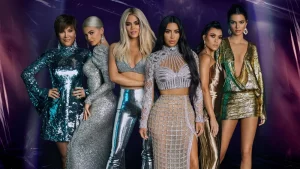
Introduction
Reality TV has undergone significant transformations since its inception, evolving from simple social experiments to complex, multi-faceted entertainment phenomena. This article delves into the evolution of reality TV, exploring its origins, the emergence of various formats, and the latest trends shaping the genre. Through a comprehensive analysis, we aim to understand how reality TV has adapted to changing viewer preferences and technological advancements.
Origins of Reality TV

The roots of reality TV can be traced back to the 1940s and 1950s with shows like “Candid Camera,” which captured unscripted reactions of ordinary people in humorous situations. However, it wasn’t until the late 20th century that reality TV began to take shape as a distinct genre.
The 1990s: The Birth of Modern Reality TV
The 1990s marked a significant turning point in the evolution of reality TV. Shows like “The Real World” (1992) on MTV and “Survivor” (2000) introduced audiences to the concept of placing real people in controlled environments and documenting their interactions. These shows laid the groundwork for many of the reality TV formats we see today.
The 2000s: Expansion and Diversification

The early 2000s saw an explosion of reality TV formats, each catering to different audience interests. Talent competitions like “American Idol” (2002) and “The X Factor” (2004) captivated viewers with their blend of drama and musical performances. Simultaneously, makeover shows such as “Queer Eye for the Straight Guy” (2003) and “Extreme Makeover: Home Edition” (2003) gained popularity by transforming participants’ lives in various ways.
The Rise of Celebrity Reality TV

Another significant trend in the 2000s was the rise of celebrity reality TV. Shows like “The Osbournes” (2002) and “Keeping Up with the Kardashians” (2007) offered an intimate look into the lives of celebrities, blurring the lines between public and private life. This trend capitalized on viewers’ fascination with fame and the personal lives of public figures.
The 2010s: Social Media Integration and Global Formats

The 2010s brought about a new wave of reality TV evolution, driven by the integration of social media and the globalization of formats. Platforms like Twitter, Instagram, and Facebook allowed viewers to engage with shows in real-time, creating a more interactive experience. Reality TV producers began to harness the power of social media to promote their shows and encourage viewer participation.
Global formats like “Big Brother,” “The Voice,” and “Master Chef” became international sensations, with localized versions produced in numerous countries. This trend highlighted the universal appeal of certain reality TV concepts and the ability to adapt them to different cultural contexts.
New Formats and Trends in Reality TV

As we move into the 2020s, reality TV continues to evolve, with new formats and trends emerging to capture the ever-changing tastes of audiences.
- Hybrid Formats: Combining elements from different genres, hybrid formats have become increasingly popular. Shows like “The Masked Singer” (2019) blend talent competitions with mystery and intrigue, keeping viewers engaged with unique twists.
- Docu-Series: Docu-series offer a more in-depth and serialized approach to reality TV, often focusing on specific themes or industries. Examples include “Tiger King” (2020), which delves into the world of exotic animal owners, and “Cheer” (2020), which follows a competitive cheerleading team.
- Social Experimentation: Social experiments continue to be a staple of reality TV, with shows like “Love Is Blind” (2020) and “The Circle” (2020) exploring human behavior and relationships in innovative ways.
- Nostalgia and Reboots: Capitalizing on viewers’ nostalgia, many classic reality TV shows have been rebooted or given new life. “Queer Eye” (2018) and “The Real World Homecoming” (2021) are examples of how beloved formats can be updated for modern audiences.
- Diverse Representation: There is a growing emphasis on diversity and inclusion in reality TV, with shows making conscious efforts to represent different cultures, identities, and experiences. This trend reflects a broader societal push for greater representation in media.
- Streaming Platforms: The rise of streaming platforms like Netflix, Hulu, and Amazon Prime has revolutionized how reality TV is consumed. These platforms offer greater flexibility in terms of format and content, allowing for more experimental and niche programming.
Conclusion
The evolution of reality TV is a testament to the genre’s adaptability and enduring appeal. From its humble beginnings to its current status as a global entertainment powerhouse, reality TV has continually reinvented itself to stay relevant. As new formats and trends emerge, one thing is certain: reality TV will continue to captivate audiences with its unique blend of real-life drama, entertainment, and innovation.









